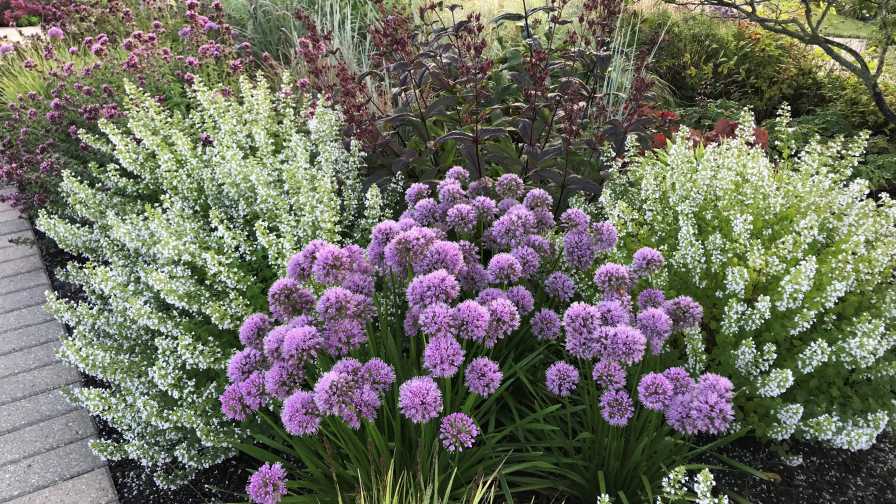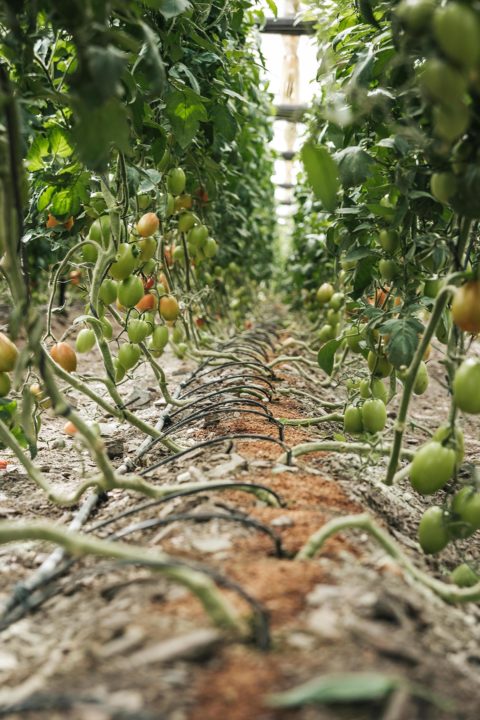Introducing the Perennial Plant of the Year for 2021

Calamint, with its clouds of white flowers, mixes well with other perennials in this garden bed designed by Austin Eischeid.
Photo courtesy of Midwest Groundcovers
Each summer, members of the Perennial Plant Association vote on their selection for the Perennial Plant of the Year. Nominations for the award generally satisfy the following criteria: suitability for a wide range of climatic conditions, low-maintenance requirements, relative pest and disease resistance, ready availability in the year of promotion, and multiple seasons of interest. Calamintha nepeta subsp. nepeta (also known as Calamint or Lesser Calamint) is the Perennial Plant of the Year for 2021.
All About Calamint
Tiny white flowers (sometimes touched with pale blue) appear on Calamint early summer to fall. Undemanding and dependable, calamint provides the perfect backdrop for other summer bloomers and foliage. This full-sun perennial has a low mounding or bushy habit, ideal for the front of the border, rock gardens, and more.
While durable and pest free, calamint also checks two important boxes for gardeners: bees and other pollinators work the flowers throughout the summer, and the aromatic foliage is deer resistant.
Calamintha nepeta subsp. nepeta is a favorite low-growing component in stylized meadows, matrix plantings, and other modern perennial designs. Gardeners can also create a lovely monochromatic garden with more sure-thing perennials including past Perennial Plant of the Year Winners such as Anemone ×hybrida ‘Honorine Jobert’ and Phlox paniculata ‘David’, or complemented with ornamental grasses such as Panicum virgatum ‘Northwind’ (switchgrass) or Schyzacharium scoparium (little bluestem).
Quick Facts
Hardiness: USDA Zones 5 to 7
Light: Full sun
Size: Up to 18 inches tall and wide
Native range: Great Britain to Southern Europe (Griffiths, M. 1994. Index of Garden Plants, Timber Press: Portland, OR)
Soil: Best with good drainage — tolerates some drought once established.
Maintenance: Low-maintenance deciduous perennial. You can shear it back lightly if desired to create a neater habit or refresh spent blooming stems. Plants tolerate drought once established.
Nomenclature: What’s with the subspecies? Abbreviated subsp. or spp., this is a naturally occuring, phenotypic variation to a species that is usually related to a geographic situation. This subspecies was selected for size and vigor. The plant may also be found under the following synonyms: Calamintha nepatoides and Clinopodium nepeta.
Grower Notes: Calamintha nepeta subps. nepeta has no patents or other restrictions. Propagate by vegetative cuttings (stem or root). Vernalization is not required. Spring planting yields a 1-gallon in 8 to 10 weeks. Grow plants on the dry side. Smaller pot sizes are not recommended. Pinch or shear if needed to shape; plants respond to plant growth regulators.
Editor’s Note: Special thanks to the Perennial Plant Association (PPA) for allowing us to reprint information on the Perennial Plant of the Year for 2021. Learn more about the Perennial Plant of the Year for 2021 and past winners at PerennialPlant.org. Also, don’t forget to mark your calendars for PPA’s Hybrid National Symposium on July 27-29, 2021.








